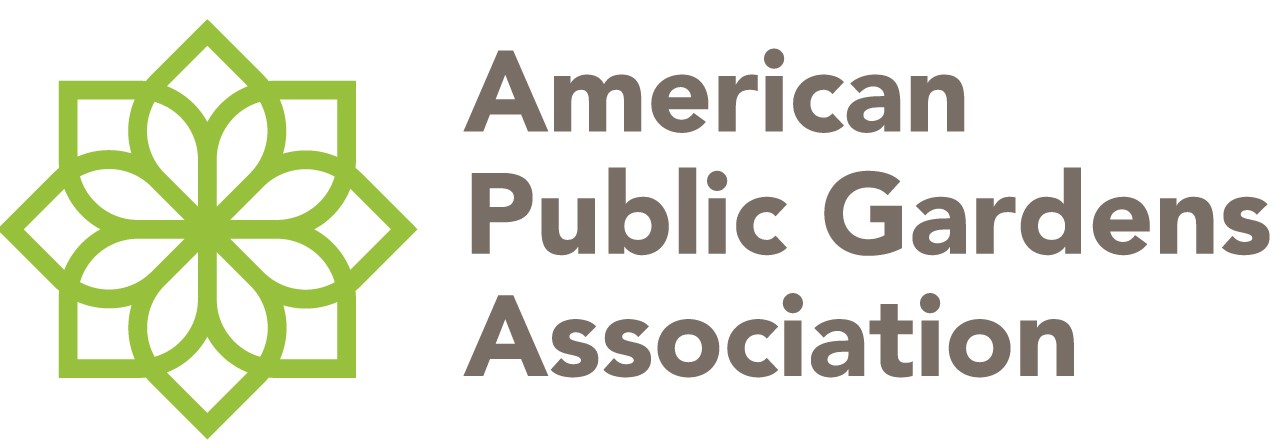Our History
American Public Gardens Association connects the field of public horticulture to strengthen collaboration and to enhance its impact; protects our natural heritage and ensures the future of public horticulture through pioneering programs and advocacy; champions the role of public horticulture in improving the quality of life for all.
1920s:
- Robert Pyle served as Chair of the American Association of Nurserymen Committee on botanical gardens and arboreta. He then set a string of events in motion that would eventually lead to the creation of the American Association of Botanic Gardens and Arboreta (AABGA).
1930s:
- The organization that would eventually emerge as the AABGA was established to represent public gardens. At this time, the organization was an affiliate chapter of the American Institute of Park Executives (AIPE) and run solely by volunteers of member gardens.
1940:
- The first AABGA meeting was held in conjunction with AIPE at the Hotel Statler in Cleveland, OH and served approximately 40 attendees.
- The American Association of Botanical Gardens and Arboreta (AABGA) completed its first year with five officers and around 50 members.
1946:
- The AABGA compiled an up-to-date directory of botanic gardens and arboreta in North America.
1949:
- The Association’s membership increased to over 70 members.
1950:
- The AABGA began publishing a quarterly newsletter, which consisted of news submissions from member gardens.
- Ties were cut with AIPE and four new committees were created: Membership Committee (C.W. Fenninger, Chair), Education Committee (E.L. Kammerer, Chair), Publications Committee (M. Van Rensselaer, Chair), Plant Introduction Committee (R.B. Clark, Chair).
1970:
- AABGA changed its dues structure and began offering institutional memberships.
- The Plant Records Center, later the Plant Sciences Data Center, was established with help from the Longwood Foundation and the American Horticultural Society.
1971:
- AABGA signed articles of incorporation in Washington, D.C. to qualify as a 501(c)(3) organization. The Association had approximately 300 members.
- AABGA President Joseph Witt appointed the Committee of Future Directions to make recommendations on programs and future planning.
1973:
- AABGA held its first solo annual meeting in Los Angeles, CA, hosted by the Los Angeles State and County Arboretum. It was attended by 93 members.
- AABGA awarded its first Student Travel Awards.
1977:
- The North American Certificate in Horticulture program (NACH) was moved forward in an effort to distinguish between amateur and professional horticulturists.
- Dr. Mildred Mathias, Director of the UCLA Botanical Garden, was appointed part-time Executive Director of the Association, the first ever paid employee.
1980:
- Carol Shutz became the Association’s Executive Director.
1982:
- Susan H. Lathrop was hired as the first full-time Executive Director.
- AABGA was housed in two small offices at The Scott Arboretum of Swarthmore College.
1986:
- The first issue of Public Garden magazine was published by the Association.
1989:
- Membership grew to over 1,700 members.
1990:
- AABGA celebrated its 50th Anniversary.
- AABGA outgrew The Scott Arboretum of Swarthmore College offices and moved to Chanticleer.
1991 (approx.):
- The North American Plan Collections Consortium (NAPCC) is introduced as a new initiative coordinating continent-wide efforts among public gardens to conserve plant biodiversity and promote high standards in collections management.
1995:
- Susan H. Lathrop resigned as Executive Director after 13 years.
- AABGA staff increased to an all-time high of 8 (3 full time, 5 part time). Prior to this, paid staff were fewer and there were more volunteers.
- The first AABGA website was created to provide electronic membership services.
1997:
- Nancy Morin (former Assistant Director of the Missouri Botanical Garden) was selected as the new AABGA Executive Director and moved the organization headquarters to Kennett Square on the Longwood Gardens property.
1999:
- Carla Pastore (former Supervisory Horticulturist for U.S. Botanic Garden) was hired as Executive Director of the Association.
2000:
- AABGA celebrated its 60th Anniversary and supported approximately 435 institutional members and 2,700 individual members.
2002:
- AABGA moved into a corporate building in downtown Wilmington, DE, its first headquarters outside of a public garden.
2003:
- Daniel Stark was selected as Executive Director.
2006:
- AABGA underwent a brand refresh and became The American Public Gardens Association.
2009:
- American Public Gardens Association headquarters moved to its current property at Longwood Gardens in Kennett Square, PA.
- On May 8th National Public Gardens Day was inaugurated.
2010:
- The American Public Gardens Association Monthly Newsletter went digital.
2011:
- Dr. Casey Sclar was selected as Executive Director.
- The Sentinel Plant Network was officially launched as an American Public Gardens Association program centered around the detection and diagnosis of high-consequence pests and pathogens.
2014:
- American Public Gardens Association experienced the highest attendance at an Annual Conference in its history, with over 800 registrants. It was hosted in Denver, CO by Denver Botanic Gardens in partnership with The Gardens on Spring Creek, Cheyenne Botanic Gardens, and Betty Ford Alpine Gardens.
- The American Public Gardens Association 2015-2020 Strategic Plan was established and approved.
2015:
- The American Public Gardens Association turned 75.
- The American Public Gardens Association underwent an extensive brand refresh that encompassed the launch of a new website in addition to new program logos and titles.
2018:
- American Public Gardens Association experienced the highest attendance at an Annual Conference in its history, with over 950 registrants. It was hosted in Anaheim, California.
2019:
- American Public Gardens Association experienced the highest attendance at an Annual Conference in its history, with over 1,000 registrants. It was hosted in Washington, D.C.
2020:
- American Public Gardens Association holds its first ever Virtual Annual Conference in reaction to the COVID-19 pandemic.
2022:
- Michelle Provaznik is selected as the new CEO
- Association closes brick-and-mortar office and goes completely virtual



